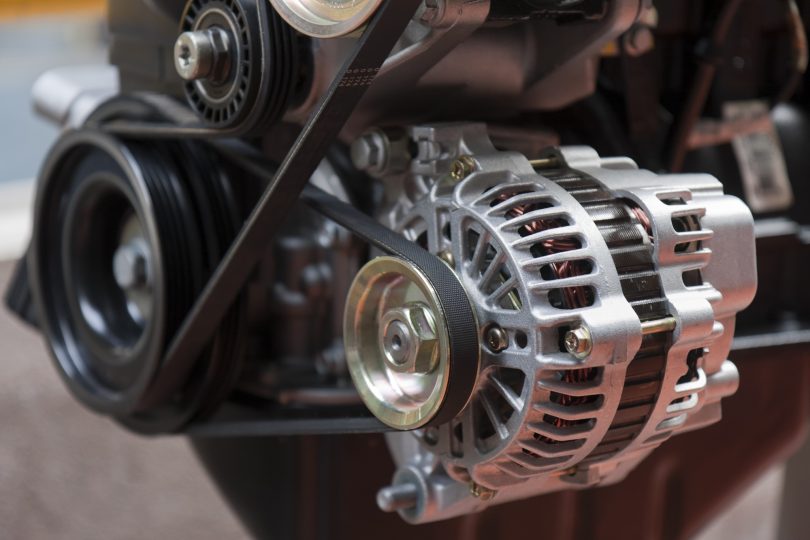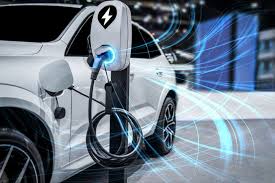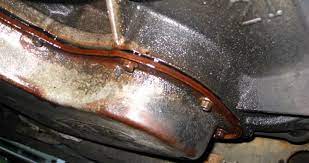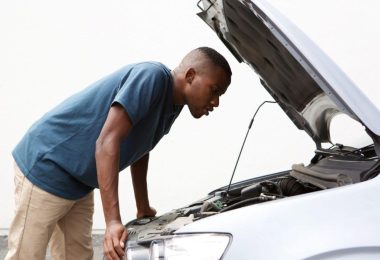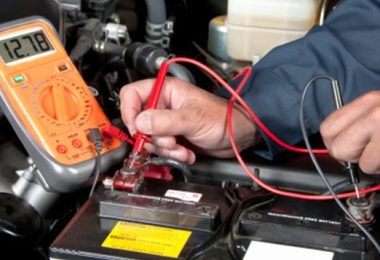Alternator is an essential part of car. Its importance is being felt when it goes bad or stop functioning. For a better understanding of this article, let me explain the part called Alternator which is our most concern on this article;
An alternator is an electrical generator that converts mechanical energy to electrical energy in the form of alternating current (AC), most alternators uses a rotating magnetic field with a stationary armature.
Now what is the function of alternator? It supplies all parts of car that required current direct current (DC) power. Your alternator is also responsible for charging your car battery while driving or while the engine is turned on. The alternator works by turning mechanical energy into electrical energy. When your engine is on, it powers a drive belt that rests on a pulley attached to the alternator.
How do I know that my alternator is bad? As it were, there are most important signs that will clearly tell you that your alternator is bad and as such needs an argent attention.
Read also: Most Common Causes of Stall When Ease-Off
- Battery Light
One of the signals you will see as a driver is battery light appearing red on the dashboard. Another sign warning light in the dashboard could be “ALT” or “GEN.” In most cases the light is shaped like a battery, though some show “ALT” or “GEN,” meaning alternator or generator, respectively.
This is based on modern of the car. This shows that battery is not charging as usual, and this implies that the alternator is not charging battery. Obviously, batteries sometimes fail on its own–but a bad alternator can actually cause the battery to drain because it’s failing to recharge it. If your battery goes dead, have the alternator checked when replacing the battery so it doesn’t happen again.
Often times, many people see this battery light on the dashboard as battery problem, or as a mere symptom that will disappear later, but that’s not really why the light comes on.
This light is linked to computer systems within the car monitoring the voltage output of the alternator. If the alternator’s output goes below or above a pre-set limit, then the dash light comes on. Once the output is within range, the light remains unlit. In the early stages of alternator problems the light can be flicker just for a second and then off again
This is often the first indicator that the alternator is going bad. Don’t ignore this indicator, even if you are experiencing no other symptoms. At this point however, the vehicle needs a reliable automobile specialist for immediate attention.
- Removal of Battery terminal turns off Car
Another sign that shows that your car alternator is bad could be when you remove the battery terminal head from the battery head. If the car goes off immediately when you remove the battery terminal head, it means that the alternator is not charging. This actually implies that the alternator is bad and needs replacement or repairs. Normally a car ought not to go off when you remove the battery terminals. A good alternator charges battery all the time. And as such give the battery needed current to supply to all the electrical part in the car when once the battery terminal is removed without the car going off.
- Burning Smells
Smell is another sensory sign of alternator trouble, and it comes from the fact that your alternator is working way too hard to the brink of overheating.
This burning smell is like odour that comes from electrical burning circuit an overworked alternator might smell like that. The hot wire can be caused by an overheated alternator, one pushing too much power through the rotor and stator.
Rubber belt can be so important on this situation, in that it keeps the alternator going, as well as the rubber sheaths on the wires that connect everything in your electrical system. A pulley that isn’t in alignment or not turning freely will cause more friction on the belt, which creates heat and then the smell of burning rubber. If those get too hot, your nose will probably know.
As it were, not all bad smells indicate potential alternator trouble. Of course, none of these signs are good, so if you smell any of them, get them checked out without wasting time. And keep in mind that the absence of a bad smell doesn’t mean everything is okay. In other words, a bad electrical smell will help you narrow down the source of your trouble, but it’s possible the alternator could be failing without any of these sign.
- Bad or Loose Connections
Bad connection can impose danger on alternator, thereby render it inefficient. In this case, everything with your car’s alternator needs to be checked so as to find out the problem. Sometimes alternator is producing charge, but is not going through to the appropriate channel that goes to the battery terminals for charge. In this case the battery will not charge and this will result to the dead of the battery.
Alternator electricity is piped through large cables and smaller wires resistance. Any problems within the wires, cables or connections at either end can reduce or stop electricity from getting through. Occasionally, a symptom of this issue might be brighter lights, as the alternator produces more energy to overcome the resistance in a bad wire or a broken or loose connection. This symptom is usually accompanied by the smell of hot wires, too. Higher resistance within a wire creates heat, similar to the way an electric burner on a stove heats up by resisting the flow of electricity.
Another problem could be the alternator’s diode rectifier. Alternators produce alternating current (AC) electricity in three phases, but a car’s accessories require direct current (DC) to operate. The rectifier changes the current from AC to DC. Without that critical component operating properly, the electricity the alternator produce can’t be used.
- Bad Battery
When an alternator begins to fail the car’s battery begins to take up the slack rather than acting as a capacitor for the system by receiving a constant infusion of electrical power from the alternator. However, even the best car battery will run down eventually, leaving you stranded in the driveway or worse, on the side of the road. Car batteries are not designed for long-term power use. They’re designed to provide your vehicle with enough electrical oomph to start by juicing the starter motor with a surge of power and getting the whole works spinning. In other words, a bad alternator can get your attention by killing your car’s battery, even if the battery wasn’t the problem to begin with.
One of the methods to find out a dead battery versus a dead alternator is relatively easy. Simply jump-start your car and then remove the jumper cables as quickly as possible. Then wait. If the alternator is failing to charge the system, the car will soon die again and you’ve pinpointed the problem. However, if the car runs and continues to run, then the likely problem is with the battery. Use caution, however, as a dying battery can only receive a charge for so long and may go completely dead at a later point despite the best efforts of the alternator.
- Bad Belts
Another signal of a bad alternator is when there is loose or bad belt. It can cause the alternator to run incorrectly, so a quick inspection of the belt can diagnose the problem.
The next three symptoms are less obvious than a signal from a warning light; however, these signs of alternator trouble can tip off a driver that there’s something going on that is out of the ordinary.
Since a broken or loose belt is pretty obvious, take a peek under the hood to see if your car has any of these issues, even if you aren’t skilled enough to fix them yourself. If you’re comfortable with basic maintenance and you’re familiar with your car’s components, you’re in good shape to catch a problem before it leaves you stranded. A quick visual check of the belt for cracking, excessive wear, and other age issues can give an indication of a future problem. Keep in mind that the belt must have the proper tension to run the alternator correctly; too much tension is just as bad as not enough. A quick check of the belt tension is usually enough to determine if a problem exists. Make sure to let your car cool off before you start touching anything under the hood. For this has often cause accident.
- Hard starting
Hard starting is one of the sign a bad alternator will give you. The car will find it difficult to rotate the engine because of the battery is weak.
Because every car is different, difficulty starting your car or keeping it running is likely to crop up as one of the first symptoms of alternator trouble. However, there are a lot of other mechanical issues that can cause stalling or hard starts. It’s important to look at everything else going on with your car to pinpoint the problem for possible solution
The battery won’t be strong enough to confidently and smoothly turn on the car. If you’re stalling even after the car has been running, the spark plugs might not be getting enough power from the alternator to keep the engine going. In other words, your battery isn’t dead yet, but it’s well on the way.
Important Advice on Bad Alternator
So many persons have asked question if they can drive their car when the alternator is bad. A bad alternator will result in a discharged (dead) battery and cause a vehicle not to start or run thereby get the battery permanently damaged.
Alternators are designed to maintain a battery’s charge, not to recharge a dead battery. Your alternator’s job is to maintain a consistent charge on your battery.
Draining your car’s battery is not advised. The more you do it, however, the worse your battery will perform. This can include destroying the battery cells completely through irreversible situation. Do not allow situation lead you into incurring more damages that will make you spend more money.
Additionally, there are a number of risks that driving a bad alternator can pose. To clarify, a bad alternator is any alternator that isn’t charging the battery fully. The average car battery is a 12 volt; while most alternators produce over 14 volts in order to make sure your battery stays charged.
That’s because all of the electronic systems on your car rely on your battery to run. Without that battery being charged, every part of the car becomes incapacitated.
Therefore, a bad alternator will result in a discharged (dead) battery and cause a vehicle to not start or run. Alternators are designed to maintain a battery by a way of charging, not to recharge a dead battery. Your alternator’s job is to maintain a consistent charge on your battery and not draining your car’s battery.
How long can you drive with bad alternator?
When you drive without a functioning alternator, your vehicle can only go for around Twenty-five miles before the battery is empty if you had a fully charged battery. But the fact remains that is not advisable to drive such a car in that deplorable condition to avoid further damages.
What happens when alternator goes out?
If the alternator dies, the battery doesn’t get a charged and rebuild its power storage from any drain it had to cover. When the car is running, the charging system (alternator, voltage regulator) should recharge the battery and provide sufficient electrical power to the vehicle. The battery serves as a backup.
What causes a car to just die while driving?
When the ignition switch is worn down, there can be a loss of power to the engine because of vibration like hitting a rough patch of road. This loss of power causes the engine of the car to die while driving. Something is wrong with the fuel pump.

